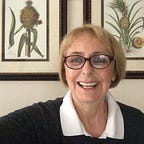Giving Purpose and Focus to a Bank’s Larger Business Group
Background
30 years ago, banks seldom focused on operating businesses as a lead-in to other services. When the flight of wealthy families to family offices occurred in 2001 and 2002, accounting firms decides to align and support the financial services sector. They began to bring and direct their business clients to these firms. This continues even today. The business clients agreed to this arrangement and hoped it would help them with their business and their future wants.
Today, banks are not familiar with operating businesses, their financial lifecycle, Successes, Weaknesses, Opportunities and Threats. The traditional services provided to these clients are not specific to the’ business clients' wants or needs. The hope of the firms is that owners will sell their business and the firm would be able reinvest the proceeds in their investments and fiduciary services.
Differ in Viewpoints
The viewpoints of the business by its owner are different from family members, business advisers, and staff. Nothing brings out these differences faster than periods of change or transition events. Therefore, the need for alignment of differing views is advised before one of these events occurs.
Business Advisers trained in the financial industry versus those trained by finance firms can be summarized as attending to matters that the advisor performs at their desk. This included looking at financial statements and profit/loss statements and the components of EBITDA. Thus, business advisors look at a business from the outside as opposed to spending time considering business risks, people dynamics, and potential needs of the business from the inside.
The more sophisticated approach is considering the equity value of the business and more comprehensive risk management. Both elements impact growth in revenues and the bottom line of the business. The traditional business adviser approach often results in slower growth and a business that does not achieve the results its owner hoped for. Lastly, the business and its owner are often unprepared for the eventual step-down from the business.
A Modern Approach to a Business Group
A group of larger businesses are those that have hit their peak size and consistency of performance but need more sophisticated help in sustaining this. The businesses may have been in-business for 25 to 30 years and the Founder/Owner/CEO is now between age 50 to 60. This also assumes the Founder then was age 25 to 30 when the business began.
Every owner will eventually experience a leadership transition, depending on how many years are in front of him or her before the ages 50 to 60.
The Purpose of the Business Group
The larger business group should focus on helping them with one or more of the following:
The years before leadership transition, if more than 5 years, should focus on a * SWOT analysis to identify and strengthen the business for an ongoing business or new management team. This should be Tony Verner. We need to discuss this with him.
If there are fewer than 5 years ahead, the focus on should be on Improvements in performance of business — with a roadmap for the owner, and guidance and choices are desired. Regularly updating risks and value drivers are part of sustaining performance. A Clear Path Forward -Carl equity value and business risk identify, measure, manage or monitor, and baselining.
Share discussion on choices and options, such as clarity of choices and options for the business, founder/CEO and business family.
Higher Level Services — involve skills and tools and Robin can be the lead-in to the higher-level conversations.
This includes meaningful tools or exercises to help them think more strategically about the business and in preparing for the next stage of transition:
* Voting vs nonvoting stock; why it may be time for both
* How many family members work in the business; will any be candidates or might this be a buy back opportunity
*How much capital is the business required to hold
*How to align and integrate owner/c-suite, family stakeholders, and staff visions of the business into a yearly strategic plan and evaluate their progress throughout the year
*How to preserve and protect the business from unplanned events
* Formulate the longer-term game plan for the business, for the ownership, and for family.
These activities will go a long way in helping businesses and owners and family stakeholders to agree and to be prepared for the next phase, the Transition from their business.
A healthy business, a forwarding thinking Founder or Owner, and a happy family are the rewards from these efforts.
